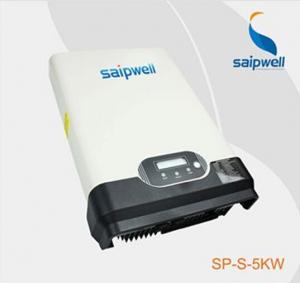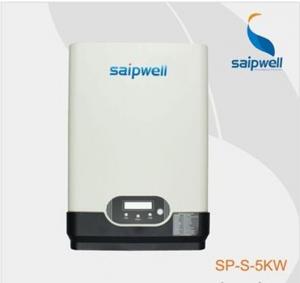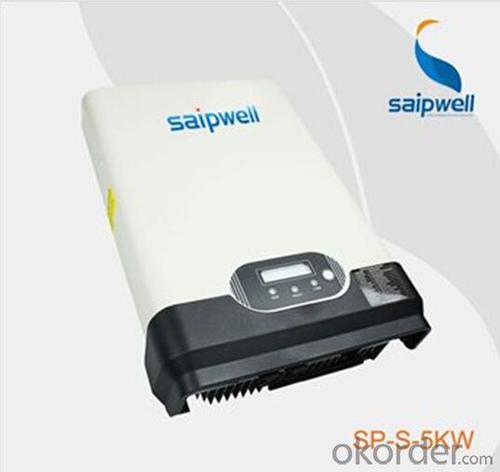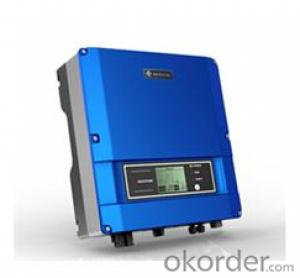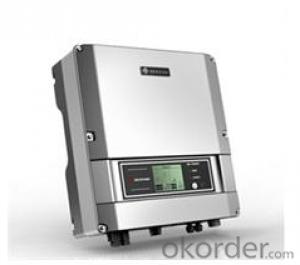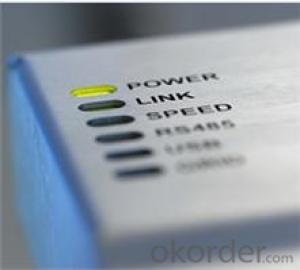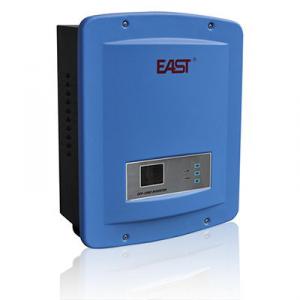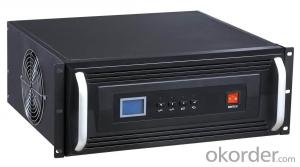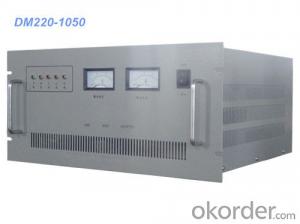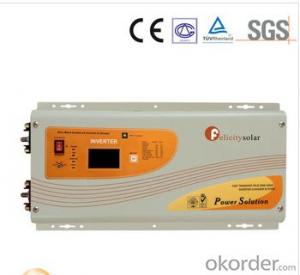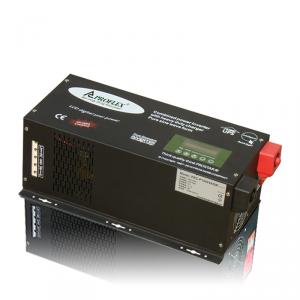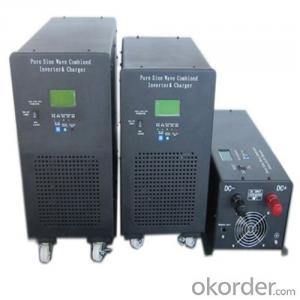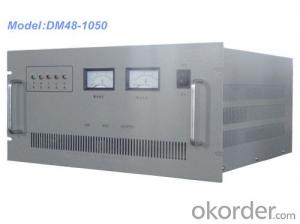10kVA Solar Inverter 5kW 220V 2024 Newest Pure Sine Wave
- Loading Port:
- China main port
- Payment Terms:
- TT or LC
- Min Order Qty:
- 5000 watt
- Supply Capability:
- 3000000 watt/month
OKorder Service Pledge
OKorder Financial Service
You Might Also Like
1. Structure of Solar Inverter 5kw 220v 2015 Newest Pure Sine Wave Description
The inverter series is an electronic product that has been designed and built to take low DC woltage power from batteries and convert it to
standard AC power like the current you have at home.
The Inverter series is a DC-to-AC with auto line-to-battery transfer and intergrated charging system. Inverter series powers from ACpower
and DC source, serving as an extended run UPS. When AC cable is connected to a wall socket, utility power goes to connected equipment
and/or charges the battery set via charging system. In Inverter mode, the Inverter series automatically converts battery energy into AC power
for backing up the connected devices
2. Main Features of Solar Inverter 5kw 220v 2015 Newest Pure Sine Wave
• Transformerless design, high efficiency (Max. 97.5%, Euro. 96.6%)
• High MPPT accuracy( >99.9%)
• Wide DC input range(120-590 Vdc), compatible with different module technologies
• Easy to wire, install and operate
• IP 65 design, suitable for indoor and outdoor installation
• 5 years warranty(10~25 years as option)
• Multi MPPT channels
3. Solar Inverter 5kw 220v 2015 Newest Pure Sine Wave Images
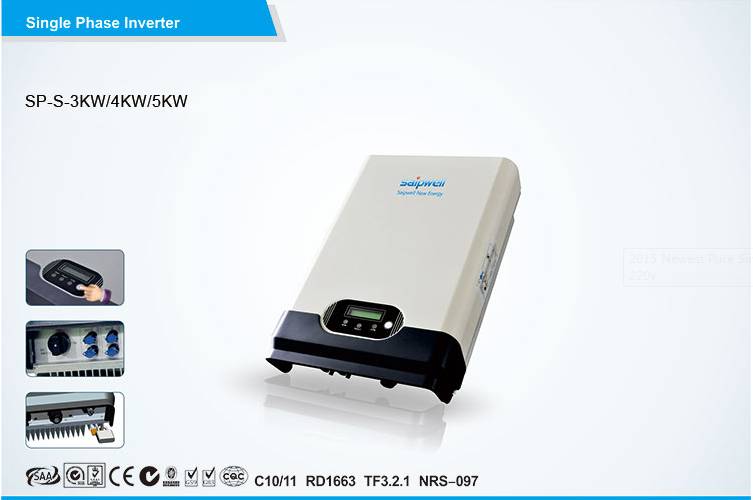
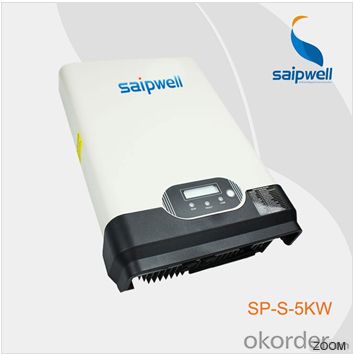
4. Solar Inverter 5kw 220v 2015 Newest Pure Sine Wave Specification
窗体顶端 Model窗体底端 | SP-S-3kw | SP-S-4kw | SP-S-5kw |
Input (DC) | |||
Max. DC voltage [V] | 590 | ||
MPPT DC voltage Range [V] | 120-500 | ||
Turn off DC voltage [V] | 120 | ||
Number of MPP Trackers | 2 | ||
Max. DC Current(A/B)[A] | 18/18 | ||
DC-Connection | MC4 | ||
Output (AC) | |||
Max. AC Power [W] | 3300 | 4400 | 4800 |
Nominal AC Power [W] | 3000 | 4000 | 4600 |
Max. AC Current [A] | 14.4 | 19 | 21.0 |
Nominal AC Current [A] | 13 | 17.4 | 20 |
Grid voltage Range | According to VDE 0126-1-1, RD1663, ENEL2010,C10/11,G83/1, AS4777 | ||
Grid Frequency Range | According to VDE 0126-1-1, RD1663, ENEL2010,C10/11,G83/1, AS4777 | ||
Power Factor | 0.99 (>30% of Full Load) | ||
THD(AC Output Current ) | <2% | ||
AC Connector | Plug-in connector | ||
Power Consumption | |||
Own Consumption in Operation [W] | 45 | 50 | 50 |
Power Consumption at Night [W] | 0 | ||
Power Consumption at Standby [W] | 6 | ||
Efficiency | |||
Max. Efficiency (at 360VDC) | 97.5% | 97.6% | 97.6% |
Euro. Efficiency (at 360VDC) | 96.6% | 97.0% | 97.0% |
MPPT Efficiency | 99.9% 窗体底端 | ||
5. FAQ of Solar Inverter 5kw 220v 2015 Newest Pure Sine Wave
Q1:Can we visit your factory?
A1:Sure,welcome at any time,seeing is believing.
Q2:Which payment terms can you accept?
A2:T/T,L/C,Moneygram,Paypal are available for us.
- Q: How do you calculate the efficiency loss due to temperature for a solar inverter?
- To calculate the efficiency loss due to temperature for a solar inverter, you need to consider the temperature coefficient of the inverter. The temperature coefficient represents the percentage decrease in efficiency for every degree Celsius increase in temperature. By multiplying the temperature coefficient with the temperature difference from the inverter's rated temperature, you can estimate the efficiency loss. For example, if the temperature coefficient is 0.5% per degree Celsius and the temperature increase is 10 degrees Celsius, the efficiency loss would be 5%.
- Q: How does a solar inverter handle harmonics in the grid?
- A solar inverter handles harmonics in the grid by incorporating filters and control algorithms that mitigate the impact of harmonics. These filters help in reducing the distortion caused by harmonics, ensuring that the solar inverter operates efficiently and does not introduce additional harmonics into the grid. The control algorithms continuously monitor the grid's harmonics and adjust the inverter's output accordingly to maintain compliance with the grid's harmonic standards.
- Q: How does the input current rating affect the performance of a solar inverter?
- The input current rating of a solar inverter directly affects its performance as it determines the maximum amount of current that the inverter can handle from the solar panels. If the input current rating is too low, it may not be able to handle the full power output of the solar panels, leading to inefficiency and potential damage to the inverter. On the other hand, if the input current rating is too high, it may be overkill for the system, resulting in unnecessary costs. Therefore, selecting an appropriate input current rating is crucial for optimal performance and longevity of a solar inverter.
- Q: What are the installation requirements for a solar inverter?
- The installation requirements for a solar inverter typically include a suitable mounting location, proper ventilation, and a stable electrical connection. The inverter should be installed in a shaded area, away from direct sunlight and extreme temperatures. It should be mounted securely on a sturdy surface, such as a wall or a rack. Adequate ventilation is necessary to dissipate heat generated during operation. Additionally, the inverter must be connected to the electrical panel or grid with the appropriate wiring and circuit breakers, following local electrical codes and regulations.
- Q: Can a solar inverter be used in areas with high levels of electromagnetic interference (EMI)?
- Yes, a solar inverter can be used in areas with high levels of electromagnetic interference (EMI) as long as it is properly shielded and designed to withstand such conditions. However, it is important to choose an inverter that meets the necessary EMI compliance standards to ensure reliable and efficient operation in these environments.
- Q: What is the role of a reactive power controller in a solar inverter?
- The role of a reactive power controller in a solar inverter is to regulate and maintain the power factor of the inverter output. It ensures that the reactive power generated by the solar panels is properly balanced with the active power, thereby optimizing the efficiency and stability of the solar power system.
- Q: Can a solar inverter be used for commercial-scale solar installations?
- Yes, a solar inverter can be used for commercial-scale solar installations. In fact, commercial-scale solar installations often require multiple solar inverters to convert the DC power generated by the solar panels into usable AC power for commercial use. These inverters are designed to handle the higher power output and voltage levels typically found in larger solar installations.
- Q: What is the role of a solar inverter in power quality management?
- The role of a solar inverter in power quality management is to convert the direct current (DC) generated by solar panels into alternating current (AC) that can be used to power electrical devices. In addition to this basic function, solar inverters also play a crucial role in managing power quality by ensuring a stable and consistent supply of electricity. They help regulate voltage levels, minimize voltage fluctuations, and mitigate harmonic distortions, thus improving the overall quality and reliability of the power generated from solar energy.
- Q: How does a solar inverter synchronize with the grid?
- A solar inverter synchronizes with the grid by constantly monitoring the grid's frequency and voltage. It adjusts its own output frequency and voltage to match the grid's, ensuring that the solar energy it produces is in sync with the electricity supplied by the grid. This synchronization process allows the solar inverter to safely and efficiently inject solar power into the grid, while also allowing for seamless transition between solar and grid power.
- Q: How does the total harmonic distortion affect the performance of a solar inverter?
- The total harmonic distortion (THD) can significantly impact the performance of a solar inverter. Higher levels of THD can cause electrical noise, which can interfere with the operation of sensitive equipment connected to the inverter. This can result in reduced efficiency, increased heat generation, and potential damage to the connected devices. Additionally, high THD can also lead to power quality issues, such as voltage and current distortions, which can further degrade the performance of the solar inverter and its associated components. Therefore, it is crucial to minimize THD to ensure optimal performance and reliability of the solar inverter system.
Send your message to us
10kVA Solar Inverter 5kW 220V 2024 Newest Pure Sine Wave
- Loading Port:
- China main port
- Payment Terms:
- TT or LC
- Min Order Qty:
- 5000 watt
- Supply Capability:
- 3000000 watt/month
OKorder Service Pledge
OKorder Financial Service
Similar products
Hot products
Hot Searches
Related keywords
